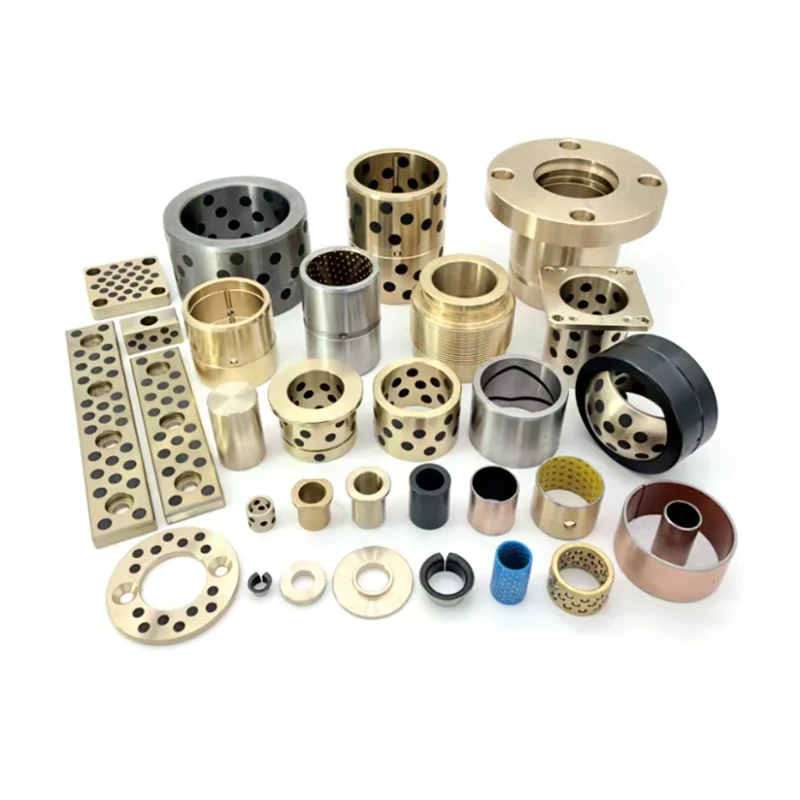What Makes Pillars and Wear Plates Essential for High-Precision Mold Performance?
2025-09-05
In the competitive world of mold manufacturing, pillars and wear plates play a critical role in ensuring the precision, durability, and overall performance of molds. As modern industries such as automotive, electronics, and packaging increasingly demand high-speed and high-accuracy production, the quality of these components becomes a decisive factor in operational success.
Understanding Pillars and Wear Plates in Mold Systems
Pillars and wear plates are integral components within injection molds, die-casting molds, stamping molds, and other high-precision tooling systems. They are specifically designed to maintain alignment, absorb operational loads, and minimize wear between moving components, thereby extending the mold’s lifespan.
What Are Pillars?
Pillars, also called guide pillars, are cylindrical components used to maintain alignment between two mold halves. They guide the movement of the mold during opening and closing, ensuring that each cycle operates with precision. Without well-designed pillars, molds can suffer from misalignment, flash defects, and premature component failure.
Key roles of pillars include:
-
Providing accurate mold alignment.
-
Minimizing deflection during high-pressure injection.
-
Reducing friction and mechanical stress.
-
Supporting high-cycle production stability.
What Are Wear Plates?
Wear plates are flat, highly durable plates installed in molds to absorb friction and prevent direct wear on critical mold surfaces. They are usually positioned in areas where two mold components make repeated contact or experience heavy loads.
Functions of wear plates:
-
Protecting expensive mold bases from direct wear.
-
Distributing loads evenly to avoid localized stress.
-
Reducing maintenance costs by making wear plates replaceable.
-
Improving the overall mold life and reliability.
Together, pillars and wear plates form a complementary system: pillars handle alignment, while wear plates handle friction and load protection.
Why High-Quality Pillars and Wear Plates Matter
Choosing the right pillars and wear plates directly impacts production efficiency, mold longevity, and final product quality. Substandard components may lead to uneven wear, machine downtime, and increased costs. High-quality components, on the other hand, deliver a competitive edge by ensuring smoother operations and longer mold life.
Key Benefits of Premium Pillars and Wear Plates
-
Enhanced Precision – Accurate alignment ensures that every molded product meets dimensional tolerances, reducing scrap rates.
-
Improved Durability – High-strength materials and precision manufacturing minimize deformation, extending component life.
-
Reduced Maintenance Costs – Replaceable wear plates protect expensive mold surfaces, lowering overall repair expenses.
-
Operational Stability – By minimizing vibration and friction, these components contribute to consistent performance in high-speed production.
-
Versatility Across Applications – Suitable for injection molds, stamping dies, die-casting molds, and more.
Material Quality Matters
Pillars and wear plates are typically made from hardened tool steels or alloy steels that offer:
-
High hardness for wear resistance.
-
Excellent toughness to handle heavy operational loads.
-
Corrosion resistance for humid or high-temperature environments.
Choosing components with superior heat treatment and surface finishing processes significantly boosts mold performance.
Technical Specifications and Product Parameters
Selecting the right pillars and wear plates requires understanding the technical specifications that match your mold’s operational needs. Below is a summary of typical product parameters:
| Component | Material | Hardness | Diameter Range | Length / Thickness | Surface Finish |
|---|---|---|---|---|---|
| Guide Pillars | SKD11 / SUJ2 / H13 | HRC 58–62 | 10mm – 50mm | 50mm – 500mm | ≤ Ra 0.4μm |
| Wear Plates | SKD61 / P20 / Alloy Steel | HRC 55–60 | Customizable | 5mm – 50mm | ≤ Ra 0.6μm |
Tip: Always match material hardness and surface finish to your production environment. For high-speed injection molding, prioritize low-friction coatings and high-toughness steels.
How to Select the Right Pillars and Wear Plates
With so many options available, it’s crucial to select components tailored to your specific production needs. Below are expert recommendations:
a) Analyze Operational Loads
-
High-tonnage molds require larger-diameter pillars and thicker wear plates.
-
Ensure materials are hardened appropriately to withstand long-term stress.
b) Evaluate Mold Speed and Precision Requirements
-
For high-speed injection, prioritize components with superior surface finishes to minimize friction and heat buildup.
-
If ultra-precise alignment is needed, choose pillars with tight tolerances and enhanced surface coatings.
c) Consider Maintenance Efficiency
-
Opt for modular wear plates that are easy to replace without dismantling the entire mold.
-
Choose components with excellent interchangeability to reduce downtime.
d) Focus on Supplier Expertise
Trusted suppliers provide not only high-quality components but also technical support to help match your exact mold requirements. Working with specialists ensures you avoid costly mismatches and premature failures.
Common FAQs About Pillars and Wear Plates
Q1: How do pillars and wear plates improve mold accuracy?
A: Pillars maintain precise alignment between mold halves, preventing misalignment during injection or stamping. Wear plates, meanwhile, reduce friction between moving parts, minimizing vibration and ensuring smoother operation. Together, they deliver consistent, accurate products over millions of cycles.
Q2: How often should wear plates be replaced?
A: Replacement intervals depend on material quality, mold speed, and operational loads. For high-volume injection molds, wear plates should be inspected every 500,000 to 1,000,000 cycles. Premium plates made of hardened tool steels can last significantly longer before replacement is required.
Why Mudebao Is Your Trusted Partner
In today’s highly competitive manufacturing landscape, investing in high-performance pillars and wear plates is essential for achieving superior precision, durability, and efficiency. Selecting components made from high-quality materials, engineered with tight tolerances, and backed by professional technical support ensures your molds operate flawlessly over the long term.
At Mudebao, we specialize in providing premium-grade mold components designed for demanding industrial applications. Our pillars and wear plates are manufactured to exacting standards, ensuring optimal performance in high-speed and high-precision environments.
If you are seeking reliable, durable, and efficient solutions for your molds, Mudebao is here to help.
Contact us today to learn more about our full range of products and technical support services.



